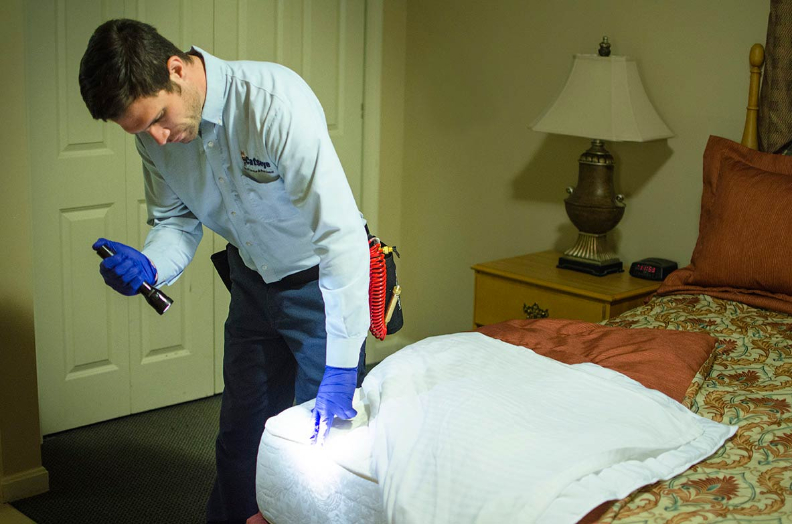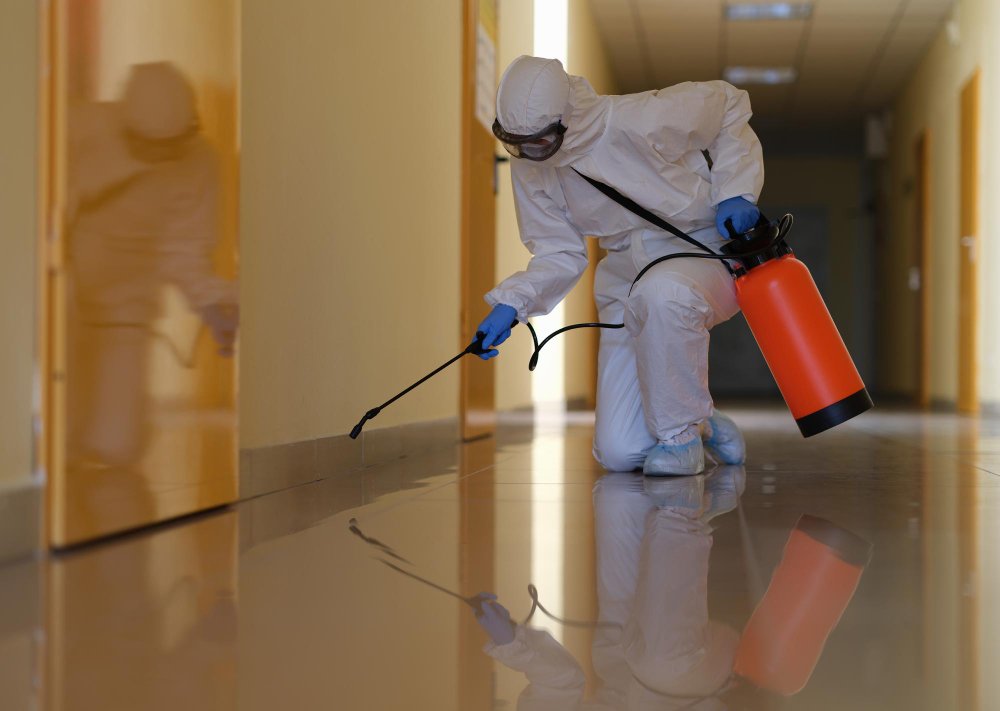Get Educated About the Kinds Of Pest Control Methods and Their Advantages for House Owners
Recognizing the various parasite control methods readily available to homeowners is important for efficient parasite monitoring. From chemical and biological strategies to mechanical and cultural practices, each technique offers unique benefits that can considerably affect both health and wellness and ecological security. House owners who are educated can make tactical selections that not only address bug concerns but also enhance the general top quality of their living setting. As we explore these approaches better, it comes to be clear that the decision-making process includes greater than just prompt results; it touches on long-lasting sustainability and well-being. What aspects should affect these critical choices?
Chemical Pest Control Methods
Chemical bug control techniques are a vital component of incorporated pest management approaches for house owners looking for effective solutions to pest problems. These methods involve the application of chemical substances developed to get rid of or prevent bugs that endanger personal effects, wellness, and convenience. Usual chemicals utilized include insecticides, rodenticides, herbicides, and fungicides, each customized to target particular insects.
The primary benefit of chemical bug control is its fast effectiveness; several solutions supply instant results, lowering pest populaces considerably in a short time. In addition, breakthroughs in chemical formulas have brought about products that are more eco-friendly and have reduced toxicity degrees for non-target microorganisms when applied appropriately.

Biological Pest Control Methods
All-natural parasite control approaches have actually gained prominence as homeowners seek safer and a lot more lasting options to standard chemical techniques. Biological insect control techniques utilize natural killers, bloodsuckers, or microorganisms to handle insect populations effectively. This method is not just eco pleasant however also decreases the threat of damage to non-target species, including advantageous bugs and wildlife.
Among one of the most common biological control approaches entails presenting natural predators right into the atmosphere. As an example, ladybugs can be used to regulate aphid populaces, while nematodes target soil-dwelling insects like grubs. In addition, parasitoids-- organisms that live on or within a host-- can be used to manage specific parasite types by laying eggs inside them, ultimately bring about their demise.
An additional technique is using biopesticides, which are acquired from natural products such as minerals, bacteria, or plants (bed bug exterminator). These items can effectively target bugs while positioning marginal risk to human beings and pets. Generally, biological insect control strategies offer home owners with an effective methods of insect monitoring that aligns with eco-friendly principles, promoting a much healthier living environment while minimizing dependence on synthetic chemicals
Mechanical Insect Control Approaches
Mechanical pest control methods incorporate a variety of techniques that literally protect against or eliminate insects without making use of chemicals. These strategies are particularly helpful for home owners seeking ecologically friendly choices while ensuring the safety of their home.
One usual approach is making use of barriers, such as nets, screens, and traps, which stop bugs from getting in homes or specific areas. Setting up window screens can effectively keep insects out, while using physical obstacles around yards can hinder bigger bugs like rabbits or deer. Additionally, mechanical traps designed for rats can record and eliminate these bugs without the requirement for harmful substances.
Another reliable useful link approach includes using mops and vacuum cleaners to eliminate bugs directly from surfaces. Normal cleansing and maintenance can significantly decrease pest populaces by getting rid of food sources and concealing areas. Using gadgets like ultrasonic insect repellents can hinder different pests via sound waves that are undesirable to them however faint to people.
Social Insect Control Practices
Social insect control techniques concentrate on changing the atmosphere and monitoring methods to develop conditions that are much less for pest invasions. These practices are essential in keeping a balanced ecological community and decreasing the dependence on chemical interventions. By changing farming practices, house owners can effectively prevent parasites while promoting plant health and wellness.
One usual method consists of plant rotation, which interrupts the life process of pests by changing the kinds of plants expanded in a details area (bed bug exterminator). This not only lessens pest populaces but likewise enhances dirt wellness. Additionally, intercropping-- planting diverse plants in closeness-- can perplex pests and decrease their capability to find their recommended host plants
Water monitoring is another vital element of social techniques. Correct watering strategies can prevent standing water, which functions as a breeding ground for mosquitoes and other insects. Preserving tidiness in and around my blog the home, such as frequently eliminating debris and food waste, can considerably decrease insect attraction.
Incorporating these cultural techniques right into a thorough bug administration method enables property owners to create a setting that normally prevents insects, thus enhancing the performance of various other control techniques while promoting sustainable horticulture and landscaping.

Integrated Parasite Management Approaches
Integrated Parasite Management (IPM) stands for a holistic technique that integrates numerous techniques to properly manage bug populations while decreasing environmental effect. This methodology integrates organic, social, physical, and chemical practices to accomplish lasting insect control. By analyzing pest populations and their natural adversaries, IPM emphasizes tracking and identifying insects prior to executing control actions.
Among the core principles of IPM is the usage of thresholds, which establish the degree of pest task that calls for intervention. This makes sure that therapies are used only when needed, lowering the reliance on chemical pesticides. Biological control methods, such as introducing natural killers or bloodsuckers, job in conjunction with cultural methods like plant rotation and environment manipulation to interrupt pest life process.
Furthermore, IPM motivates restaurant pest control the use of least-toxic chemical alternatives when treatment is needed, prioritizing items that present minimal danger to non-target organisms and the atmosphere. For property owners, adopting IPM comes close to not just improves the efficiency of pest monitoring but also promotes a healthier living environment, fostering biodiversity and decreasing chemical exposure. Ultimately, IPM encourages homeowners to make enlightened choices that stabilize insect control with ecological responsibility.
Verdict
In verdict, understanding the different parasite control methods equips house owners to make enlightened decisions concerning pest monitoring. Each strategy-- chemical, biological, mechanical, cultural, and integrated bug monitoring-- offers distinct benefits that cater to various demands and choices.
Recognizing the various pest control techniques offered to homeowners is vital for reliable parasite monitoring.Chemical pest control methods are a vital element of incorporated bug administration methods for home owners looking for reliable remedies to pest problems. On the whole, organic parasite control strategies give home owners with a reliable methods of parasite administration that lines up with environmental principles, promoting a much healthier living setting while lowering dependence on artificial chemicals.
Cultural pest control practices concentrate on changing the setting and administration methods to create conditions that are much less favorable to pest invasions.In conclusion, understanding the numerous bug control techniques empowers homeowners to make enlightened decisions concerning pest management.